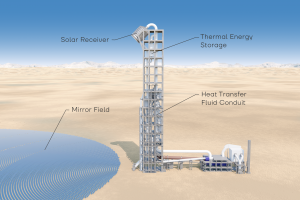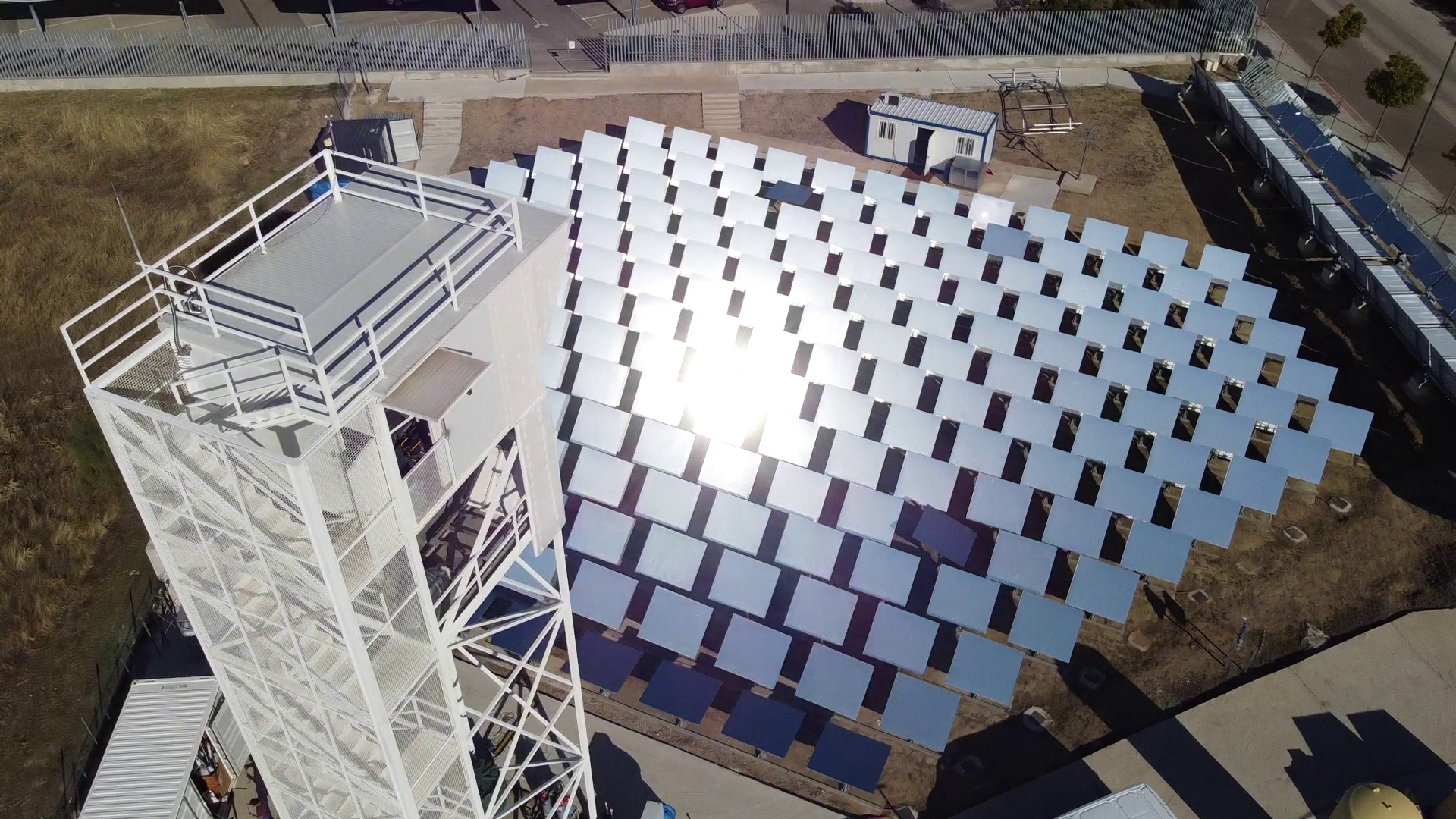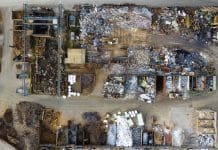Philipp Furler and Gianluca Ambrosetti, co-founders and CEOs of Synhelion, explain how solar heat can be used to reduce carbon emissions during cement production
It’s impossible to imagine a world without concrete. As one of our most reliable, affordable, and sturdy construction materials, we need it for almost everything we build. However, the production of cement, one of concrete’s main components, is a major source of CO2 emissions. It accounts for 8% of global CO2 emissions.
Even though cement is not the major constituent of the concrete mix, it is almost exclusively responsible for concrete’s carbon footprint. Decarbonising its production process would go a long way in taking the construction sector towards net zero.
One-third of cement-related emissions stems from the burning of fossil fuels to heat the kiln, the other two-thirds are produced during chemical reactions that release CO2 when limestone is processed – the calcination process.
How can CO2 emissions in the cement production process be reduced?
We need to stop using fossil fuels and switch to renewables instead. This is easier said than done as cement pyroprocessing requires extremely high-temperature heat, which is traditionally obtained by burning fossil fuels.
What if we could use renewable energy? Solar heat is the most abundant renewable energy resource on Earth. It delivers more energy to our planet within a couple of hours than the whole world consumes within a year. The challenge lies in harnessing this huge energy potential in an efficient and economical way.
Solar heat to address the first third of cement’s CO2 emissions: heating the kiln
Concentrated solar energy is a promising technology for the cement industry but has only in the last few years been shown to produce the necessary temperatures. Whereas state-of-the-art concentrated solar systems have typically worked in temperature ranges between 400 and 600°C, recent innovation has allowed Synhelion, a Swiss start-up, to generate solar process heat beyond 1’500°C. It’s the hottest existing solar process heat on the market and enough to fire up and keep running a cement kiln.
Heating the kiln using concentrated solar energy could mitigate one-third of the emissions produced in the cement manufacturing process. What about the other two-thirds of emissions that are released during the calcination process?

Carbon capture to address the other two thirds of cement’s CO2 emissions: calcination
Since CO2 is a product of the chemical process, its formation cannot be avoided. Instead, we need to capture the CO2 and recycle it. Capturing carbon in existing cement plants is challenging and expensive, as the CO2 from calcination is mixed with the emissions resulting from the burning of the fossil fuel. The accumulated flue gases are accordingly contaminated.
In contrast, with solar-driven cement plants the stream of CO2 coming from calcination is much purer, making the carbon capture process easier and significantly cheaper. Once it’s captured, it can be used in other industries – for example to produce synthetic fuels which are also urgently needed to decarbonise aviation, shipping, and other long-distance transport.
How the technology to decarbonise cement production works
A field of mirrors concentrates solar radiation at a focal point at the top of a solar tower, where a solar receiver is located. When the sun shines, the concentrated sunlight heats a heat transfer fluid (HTF) inside the solar receiver to up to 1’500°C. Even when the sun isn’t shining, thermal energy storage ensures continuous cement production.
The heated HTF, a gas mixture composed of CO2 and H2O which circulates in a closed circuit, is then transported to the ground, where it delivers the high-temperature solar heat to the cement pyroprocessing. The CO2 emissions from the limestone processing mix with the HTF. This ensures that zero CO2 is released into the atmosphere. Instead, a concentrated stream of CO2 and H2O is created, from which CO2 can be captured. This can then be piped from the cement plant to an adjacent solar fuel plant to be used in the production of sustainable fuels or it can be stored underground.
CEMEX, one of the largest building materials companies in the world, is planning a staged approach towards implementing solar-driven cement plants. A pilot installation is expected to be incorporated into one of the company’s existing cement plants by the end of 2023 and will gradually be extended to a fully solar-driven plant operating in conjunction with solar fuel production.
World’s first solar clinker
In February, Synhelion and CEMEX announced a first breakthrough of their joint research efforts: they managed to set up a small pilot batch production unit to produce clinker from concentrated solar radiation. This revolutionary development was achieved by connecting the clinker production process with the Synhelion solar receiver. The pilot was installed at the Very High Concentration Solar Tower of IMDEA Energy, located in Móstoles, Spain. The solar receiver heats a gaseous heat transfer fluid and thus provides the necessary process heat for clinker production.
The pilot demonstrated successful calcination and the first successful clinkerization. The clinker was used to produce cement and was then further processed to produce concrete. In the next phase of their joint research and development project, CEMEX and Synhelion aim to produce solar clinker in large quantities in a continuous setup.
Challenges on cement’s path to net zero
While the direct CO2 intensity of cement production needs to decrease by 3% annually until 2030 to align with the net zero path laid out for 2050, it increased during the five years leading up to 2020.
The cement industry is under significant regulatory and investor pressure and has ambitious plans for decarbonisation. It endeavours to explore carbon emission reductions along the full cement production value chain but emphasises the need for a regulatory framework that supports the sector’s transformation.
The UK government’s latest action plan for cement addresses carbon capture, waste- and biomass-based fuels, energy efficiency and waste heat recovery measures, as well as lower clinker and low carbon cement production.
Change needs to happen quickly, with industry, innovators and governments working extremely closely. Solutions such as concentrated solar heat exist but are not yet commercially available for cement applications. Others, such as carbon capture, are on the market, but are not yet widely available and still comparatively expensive. Pilots need to be assembled in record-time and once the full process is proven at industrial scale, the global roll-out will need to be fast.














